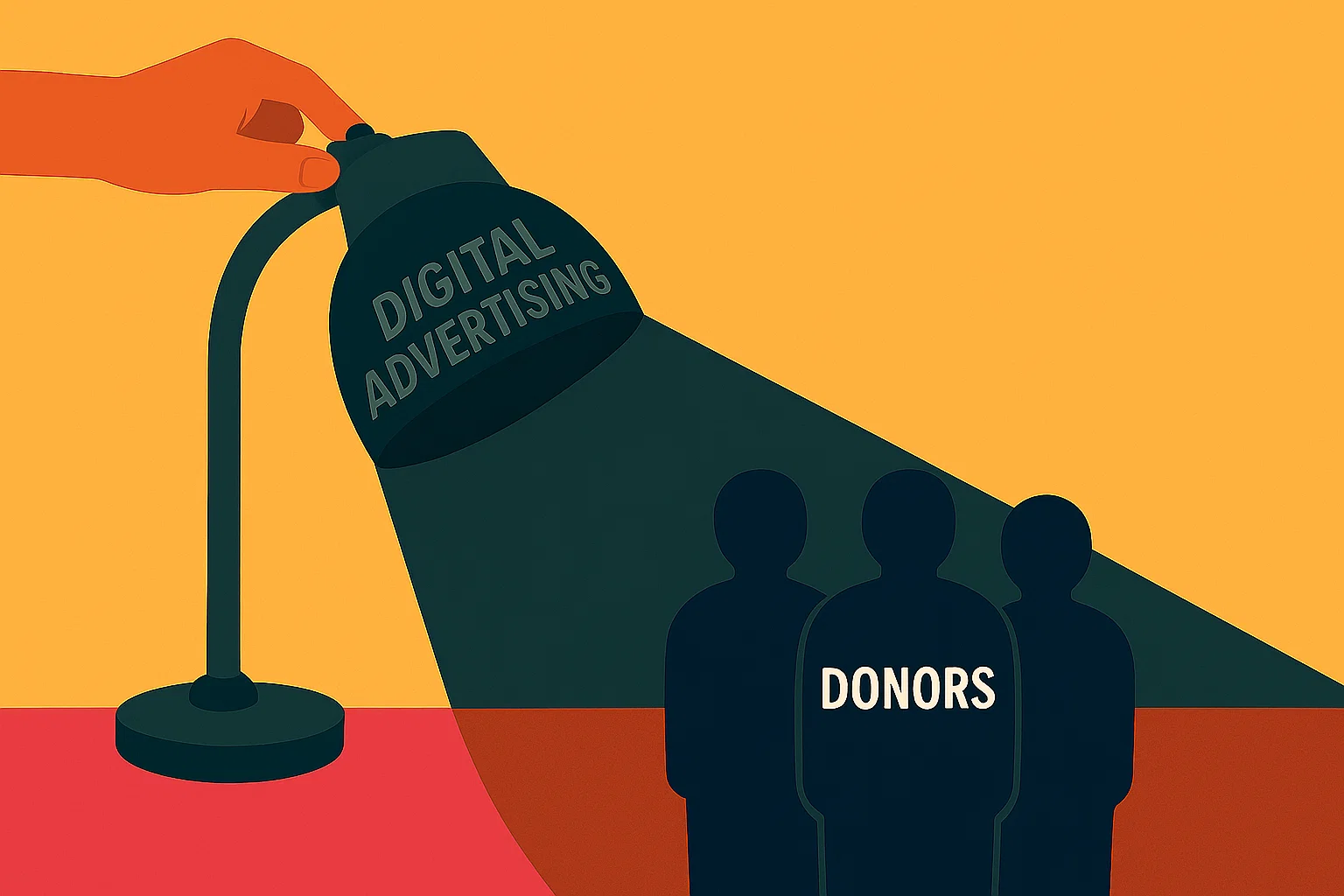When the Ads Went Dark, So Did the Donations
A nonprofit turned off its digital ads. Revenue dropped 40%. Here’s why that matters more than any attribution model.
The Challenge
If you’ve ever tried explaining ad attribution to a board member, you know what a joyless exercise that is.
You pull up dashboards. You walk them through conversions. You talk about impressions, time decay, and click paths. At some point, someone squints at the screen and asks the question you dread most: “But how do we really know the ads are working?”
We’ve all been there. It’s a fair question. It’s also maddening, because the reality is: you usually don’t really know. Attribution is hazy. People see an ad, don’t click, but then Google your org later and donate then. Or they see ten ads across two devices, get a mailer, and donate after a board member mentions you. Was it the ad? The mailer? The friend? All of the above?
But sometimes—very rarely—you get an answer so loud and clear, you don’t need a spreadsheet to hear it.
That’s what happened recently with one of our nonprofit clients.
The Unintentional A/B Test
This client had been running donation-supporting ads with us for months. Nothing fancy, just a steady campaign reminding folks they exist, that their work matters, and that donations keep it going. The returns were stable and predictable. Month after month, they pulled in solid revenue.
Then, the ads were turned off. Completely. Radio silence.
No change in programming. No shift in messaging. No new fundraising campaign. Just one lever pulled: ad spend paused.
And the results? Monthly revenue dropped 40%.
Not 7% where you could argue seasonality or vibes. A clean, immediate, unmissable 40% drop sustained over two months.
What That 40% Tells Us
This wasn’t a controlled study. But it was even better in some ways, because it was real. This happened in the wild, outside of a whitepaper or a lab.
Here’s what we took from it:
Ads work. That 40% of revenue didn't just vanish. It was being driven by the awareness, nudges, and reminders those ads provided. Turn off the signal, and the donations slowed to a trickle.
Attribution isn’t the point. Instead of trying to argue which ad or which impression drove which donation, this gave us the inverse proof. Take the ads away, and the results changed dramatically. The correlation isn’t just strong, it’s screaming.
Ads aren’t magic; they’re multipliers. The client didn’t change their programs during this time. Same work, same mission. But ads amplified that work. They put it in front of people who cared. They built familiarity, which built trust, which built donations. That’s the whole game.
A Note to Nonprofits: This Doesn’t Mean “Run More Ads”
It means run the right ads for the right things.
What made this example work wasn’t just the ad budget, it was that there was something worth advertising in the first place (note that 60% of donations kept coming in even without the ads). If this nonprofit weren’t already doing good, compelling, fund-worthy work, no ad campaign would’ve helped.
And that’s worth repeating: ads don’t create value. They surface it. They accelerate it. They give great programs the visibility they deserve.
So if you’ve got something worth sharing, if you’re doing something good and just need more people to see it, then let’s talk. Not about attribution models or ROAS formulas. Just about what happens when the lights go out, and why, if you're lucky, you’ll never have to find out the hard way.
Final thought:
Marketing isn’t alchemy. It’s architecture. You build good programs. We build systems that help people find them. Together, that’s how you grow.

